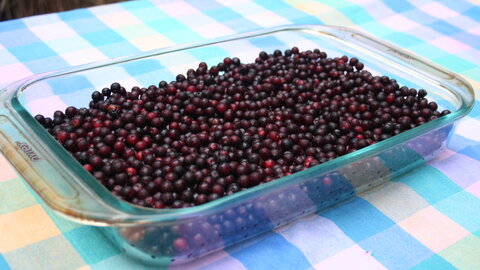Prunus virginiana
,
Deciduous
Chokecherry is common throughout much of the US and
southern Canada and grows across Nebraska. It is typically
a suckering, multi-stemmed large shrub, but can be a small tree reaching up to 25’ tall.

Where To Grow
Chokecherry is very easy to grow and adaptable to a wide range
of soils. It also is drought tolerant. Grow the tree in full sun, please.
Size at Maturity
Tree Height
Tree Spread
20-30'
20-30'
Wildlife Benefits
Chokecherry is important to many wildlife animals. Birds, rabbits, hares, rodents and bears all seek out and eat its fruit. It provides
food, cover and nesting habitat for a variety of birds. Birds will also take advantage of its growth form for cover and nesting habitat.
It is used extensively by deer as a browse source in the winter. The early spring flowers provide an important source of nectar for
butterflies, honeybees, and ants.
Additional Considerations
Though its fruits are quite bitter—thus its common name—they
were a staple food of Plains Indians. We still use them today in jams and wines. Keep in mind, the seeds are toxic due to the production
of hydrocyanic acid in the leaves, stems, and seeds.
Interesting Facts
Anthropologists suggest that the cherries have been harvested in Eurasia from as early as 4,000 to 5,000 BCE.
